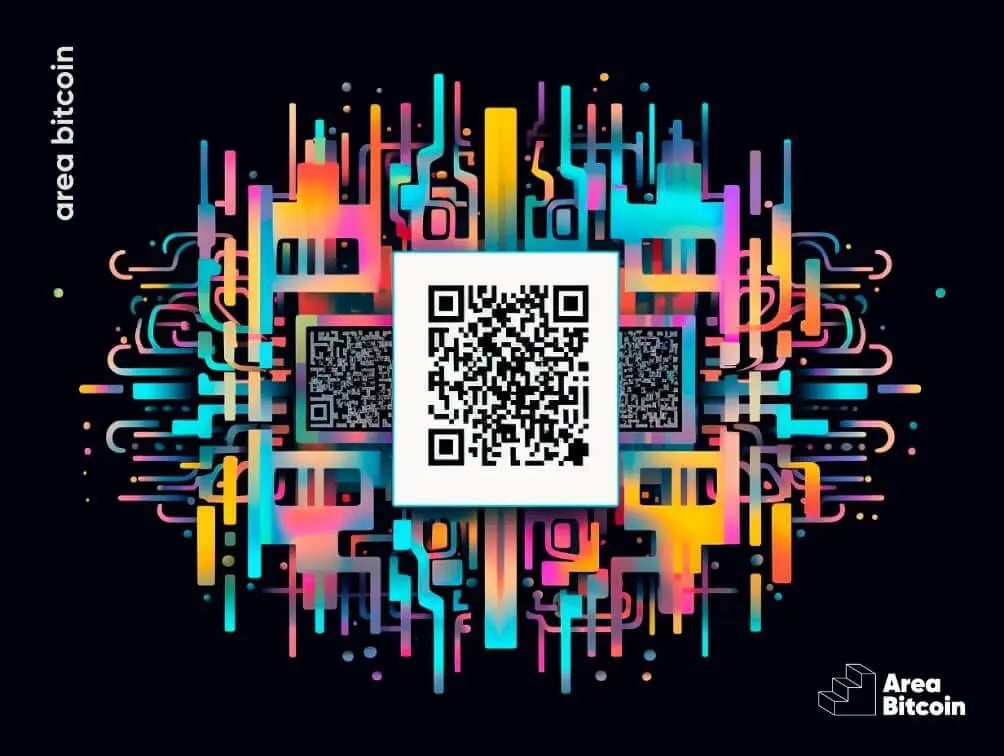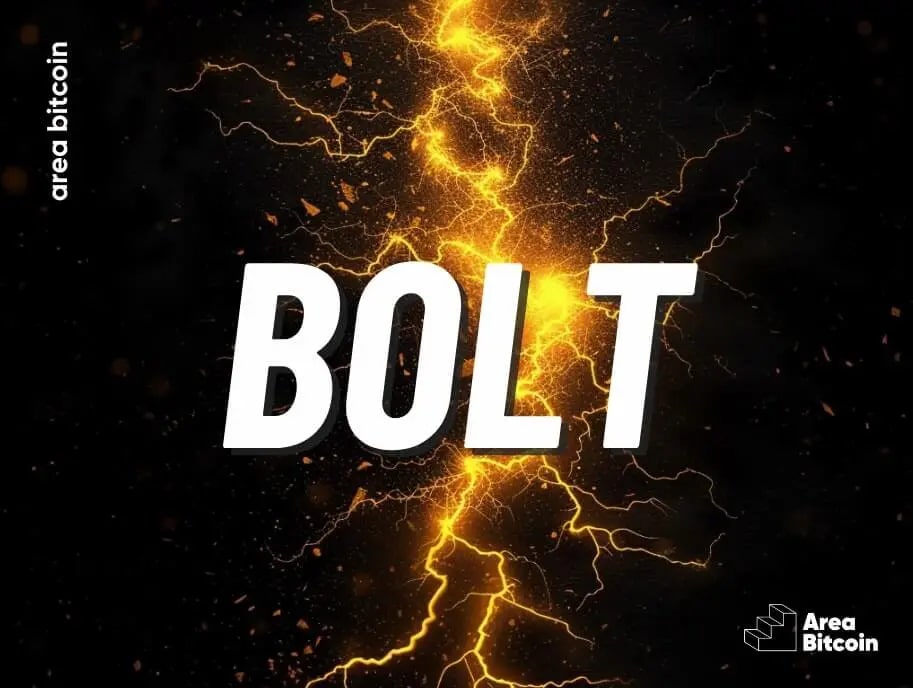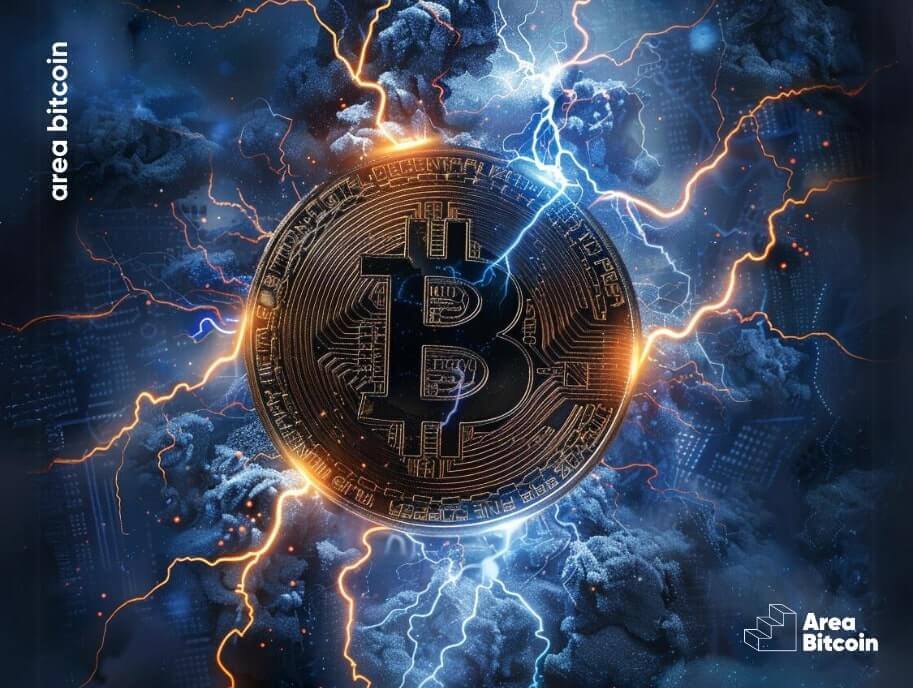When Bitcoin was created, one of the biggest issues was its scalability.
The question was how people could transact quickly and cheaply in the future, given that block mining occurs every 10 minutes and supports a maximum byte size.
Thus, the solution was to create a second-layer network, preserving the Bitcoin blockchain’s fundamental security and decentralization features while addressing the issues of agility and transaction fee value.
Here’s what Lightning Network is all about!
Understanding the Scalability Problem
Bitcoin has grown in popularity in recent years but still faces some challenges concerning its wide-scale adoption.
One of these challenges is Bitcoin’s scalability problem, which refers to its ability to process a large number of transactions quickly and efficiently.
As more people start using Bitcoin, the network can become congested, and transactions may take longer to confirm.
Blockchain Trilemma
The triangle below represents the famous blockchain trilemma (scalability, decentralization, and security), where you can only choose two features, that is, two sides of this triangle.
This happens because the computer codes of blockchains cannot have these three characteristics simultaneously.

So, if the blockchain is secure and decentralized, it ends up being slow and has difficulty scaling as adoption increases.
If it is decentralized and scalable, it will compromise data security properties. And if it is scalable and secure, it ceases to be decentralized, that is, you are back to depending on an intermediary, no different from a Visa or PayPal.
Bitcoin Network
Bitcoin is the most secure and decentralized cryptocurrency, and these characteristics eliminate the need for the centralization of private banks and central banks.
However, as more people started adopting Bitcoin, the network’s processing became slower.
For instance, the Bitcoin network processes an average of 7 transactions per second, which is meager compared to Visa, which processes an average of 4,000 transactions per second.
The Bitcoin network constantly verifies information blocks on its blockchain to ensure data security. This obsession with security and constant verification, however, makes the Bitcoin blockchain’s layer 1 slower compared to centralized solutions and other cryptos.
Alright, but isn’t this a bad thing?
No! This is not bad, in fact, it’s quite good!
If Bitcoin wants to be a new global financial network and a store of value, it first needs to be extremely secure and independent of any government, and Bitcoin already is.
Each transaction in layer 1, on the Bitcoin blockchain, needs to be recorded in a block, which takes about 10 minutes to happen. Besides, the blocks have a limited amount of information to 1 MB, which means not all transactions in the queue make it into the next block.
Transactions that pay more to the miners have priority in the processing queue and are recorded first in the blocks. This creates a bottleneck, which can get quite congested at times when many people decide to transact Bitcoin.
Thus, once a transaction is recorded in the blockchain, it is transmitted to all computers processing the network, which is why the network is slow. Each transaction takes an average of 10 minutes to be inserted into a block and then propagated.
Now you understand why the Bitcoin blockchain is not the most agile for processing layer 1 payments and, thinking about a world where everyone uses Bitcoin, this layer 1 would not be able to handle the growing transaction demand.
From there, bitcoin’s layer 2 emerges.
So what is the Lightning Network?
The Lightning Network is a payment layer built on top of the Bitcoin network, which allows for instant and low-cost transactions between two parties without those transactions being recorded on the Bitcoin blockchain.
Instead, transactions are conducted off the blockchain, in payment channels opened between users, which are then recorded on the blockchain only when the channel is closed.
The Lightning Network has the potential to make Bitcoin transactions faster, cheaper, and more scalable, as well as enabling micropayments and instant payments anywhere in the world.
Why was the Lightning Network created?
This is why there are various layer 2 protocols trying to solve Bitcoin’s network scalability while maintaining its security and decentralization characteristics.
It’s kind of like a second floor to the protocol:
Layer one is the foundation, the structure, and everything that keeps the network up, and layer two and beyond are all the other functionalities that are wanted to be implemented on the network.
Therefore, it’s important to have a solid foundation and Bitcoin already has that.
So, it was with this goal in mind that they created the Lightning Network. The aim is to perform thousands of transactions instantaneously, for less than 1 cent, in a decentralized and global manner.
How does the lightning network work?
The Lightning Network is an off-chain payment protocol, meaning it operates in parallel to the Bitcoin blockchain and works through nodes and payment channels that connect around the world.

This means that it is a network that connects to the blockchain, but not all transactions are recorded on the blockchain.
Think of it like a building where all floors necessarily connect to the 1st floor and the base structure, everyone who enters or leaves the building must go through the lobby, take an elevator and go to the desired floor, Bitcoin is the same.
The layers above necessarily have to go through the base layer to enter or exit the protocol.
Also read: what is Taproot
How does opening a channel on the lightning network work?
To open a lightning channel, two people need to lock funds, bitcoin, in a multisig address, which is a type of address where two or more people can sign the transactions on the blockchain.
It’s like a joint Bitcoin account that avoids a single point of failure. This transaction is done on layer 1 and is like entering the building’s lobby.
These bitcoins locked in the blockchain represent the maximum capacity of the channel. For example, if you and I want to open a payment channel on the lightning network, we will need to deposit funds into a multisig address and we will be able to exchange values within that channel, as long as we don’t exceed the total value we locked.
Therefore, it’s as if the floors above the building were a bar and you have a prepaid tab. You can order what you want, as long as it’s within the maximum amount you paid.
So, when you want to settle the bill and close the tab, you just need to go to the cashier, close the tab and go home. In other words, close the lightning channel and close the transaction on the blockchain, so that this transaction can be mined and the final balance settled.
In summary, the two only transactions that are recorded on the blockchain are:
- the opening transaction;
- and the closing transaction of the channel.
So, I could open a lightning channel with you where I would put 2 bitcoins and you would also put 2 bitcoins. This way, we could send satoshis instantaneously, almost cost-free and at any time, as long as we don’t exceed the total value of 4 bitcoin.
Who can open a channel on the Bitcoin lightning network?
Anyone can open a lightning channel, as long as they have enough technical knowledge to set up and run a Lightning node on their machine and allocate their bitcoin in this channel.
This solution enables the execution of thousands of instantaneous transactions, without needing to wait the 10 minutes of block processing, making the Bitcoin network more scalable.
And what about the privacy of the Lightning Network (LN)?
You may be wondering about privacy in transactions on the Lightning Network. In short, the network uses cryptography and a protocol similar to TOR, called onion routing, to ensure transaction privacy. This protocol allows intermediary nodes to verify and decrypt only their part of the route, without having access to other payment information.
Lightning Network wallets
There are several wallets that support the Lightning Network, like Blue Wallet and Wallet of Satoshi. Even so, to maintain your long-term hodl, it’s ideal to keep your bitcoins in your wallet via layer 1, via blockchain, as it is the most secure layer.
Network growth
Despite not seeing many people using lightning here in Brazil, the network is growing fast. Today there are about 19,700 nodes, 42,000 channels and more than a million bitcoins locked in lightning channels.

Furthermore, as Bitcoin grows in adoption, the Lightning Network also follows this global growth.
More and more countries are using this payment network.
The growth of the Lightning Network can be observed by the increase in bitcoins locked in the network since 2017. The more bitcoins are allocated in the network, the greater its capacity and financial volume.

Network usability
In terms of this network’s usability, a brilliant function that can be adopted is that the Lightning Network allows for the evolution of on-demand consumption.
Have you ever paid a subscription fee even without using the service?
Well, with the Lightning Network, on-demand business models can be created, where you only pay for the minutes or seconds you consume.
Amazing, right?! This could be used in music apps, movie apps, or any online content.
And I’ll go further, can you imagine receiving your salary for every hour or minute worked? This is where time and money come together allowing for micropayments and new formats to receive your pay for work.
We hope that in the future people can transact more and more quickly, globally, at a low cost, but most importantly, using Bitcoin, the most solid money that exists.
Share on your social networks:
Area Bitcoin is an educational Bitcoin school that aims to accelerate the financial and intellectual sovereignty of all individuals.
Did you like this article? Consider buying us a cup of coffee so that we can keep writing new content! ☕







